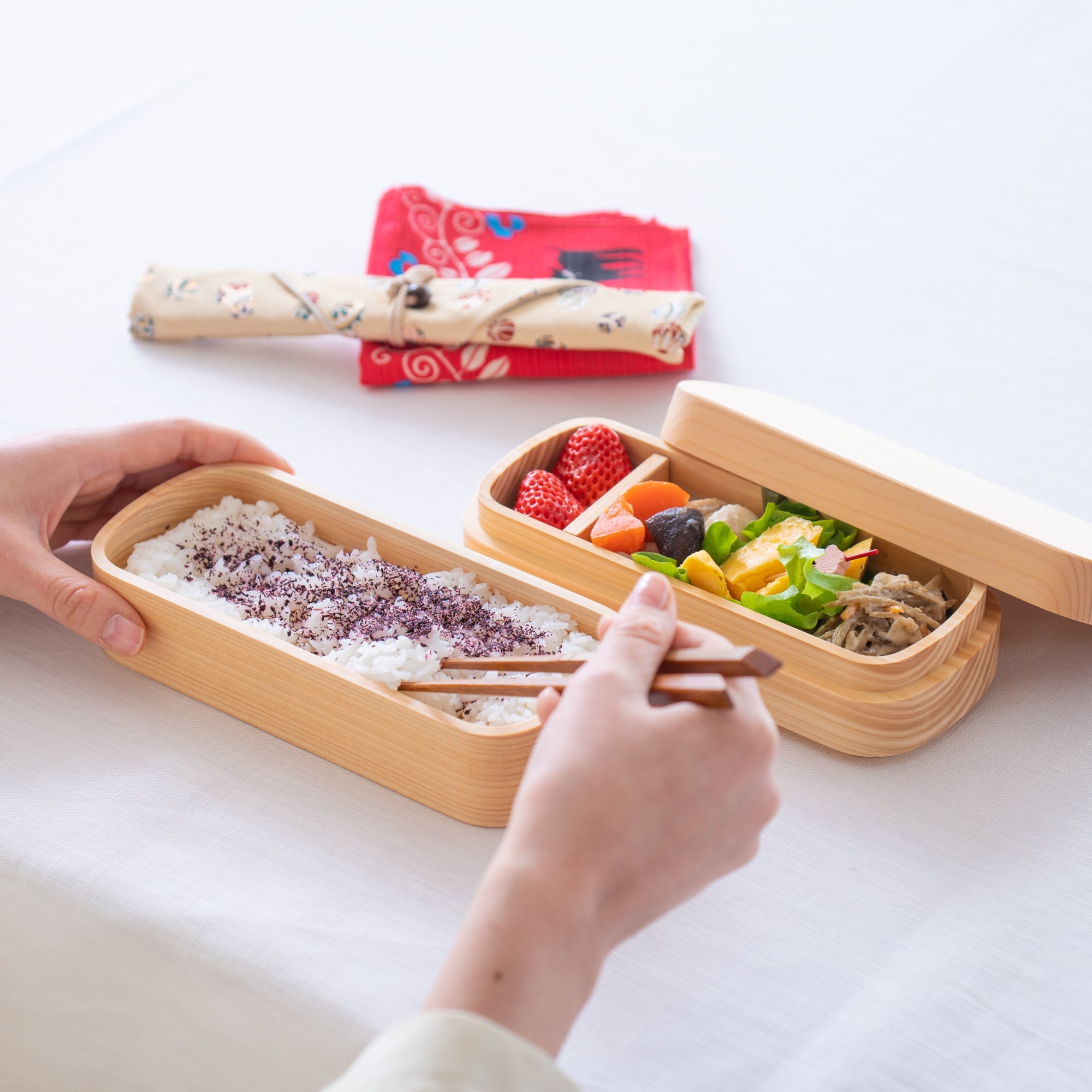
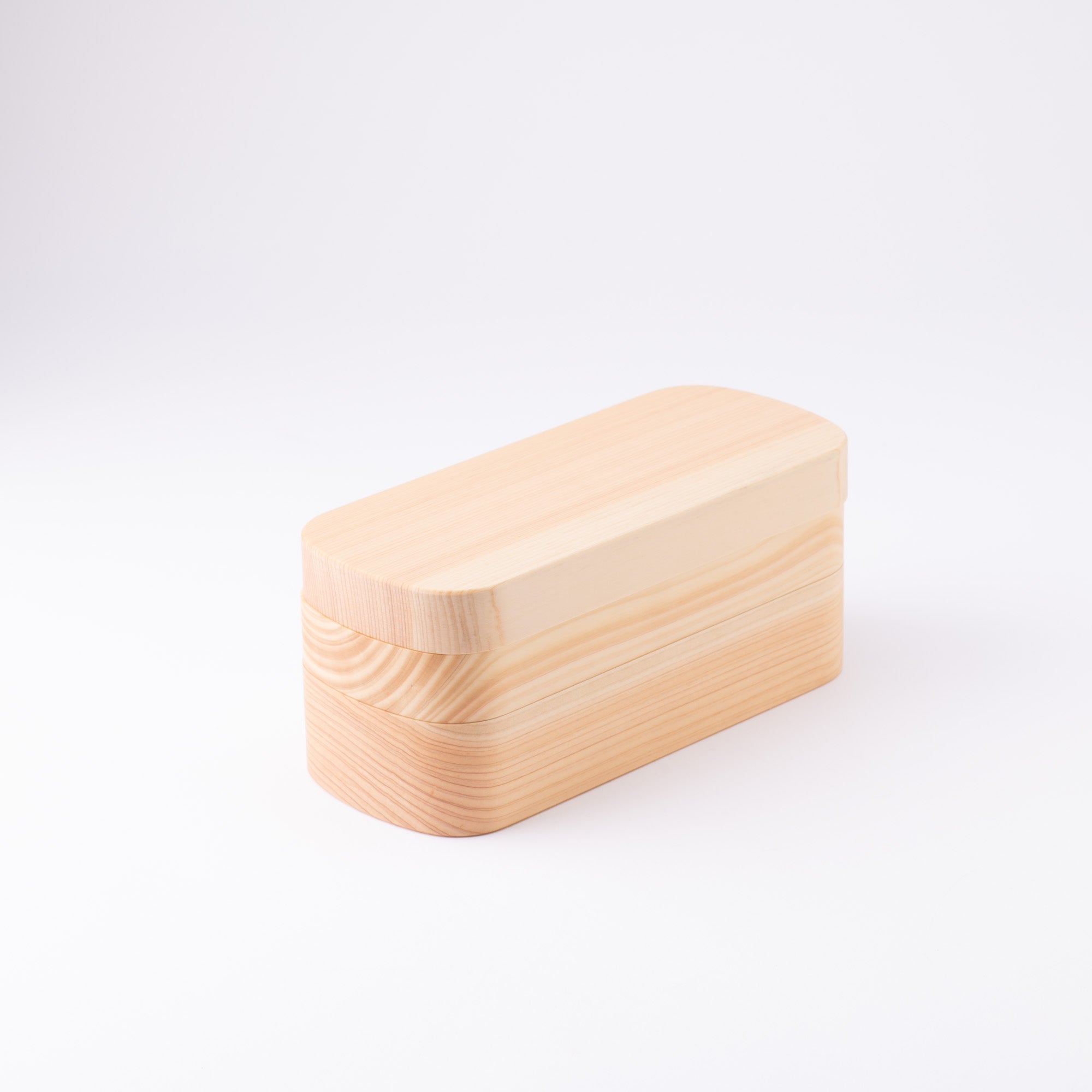
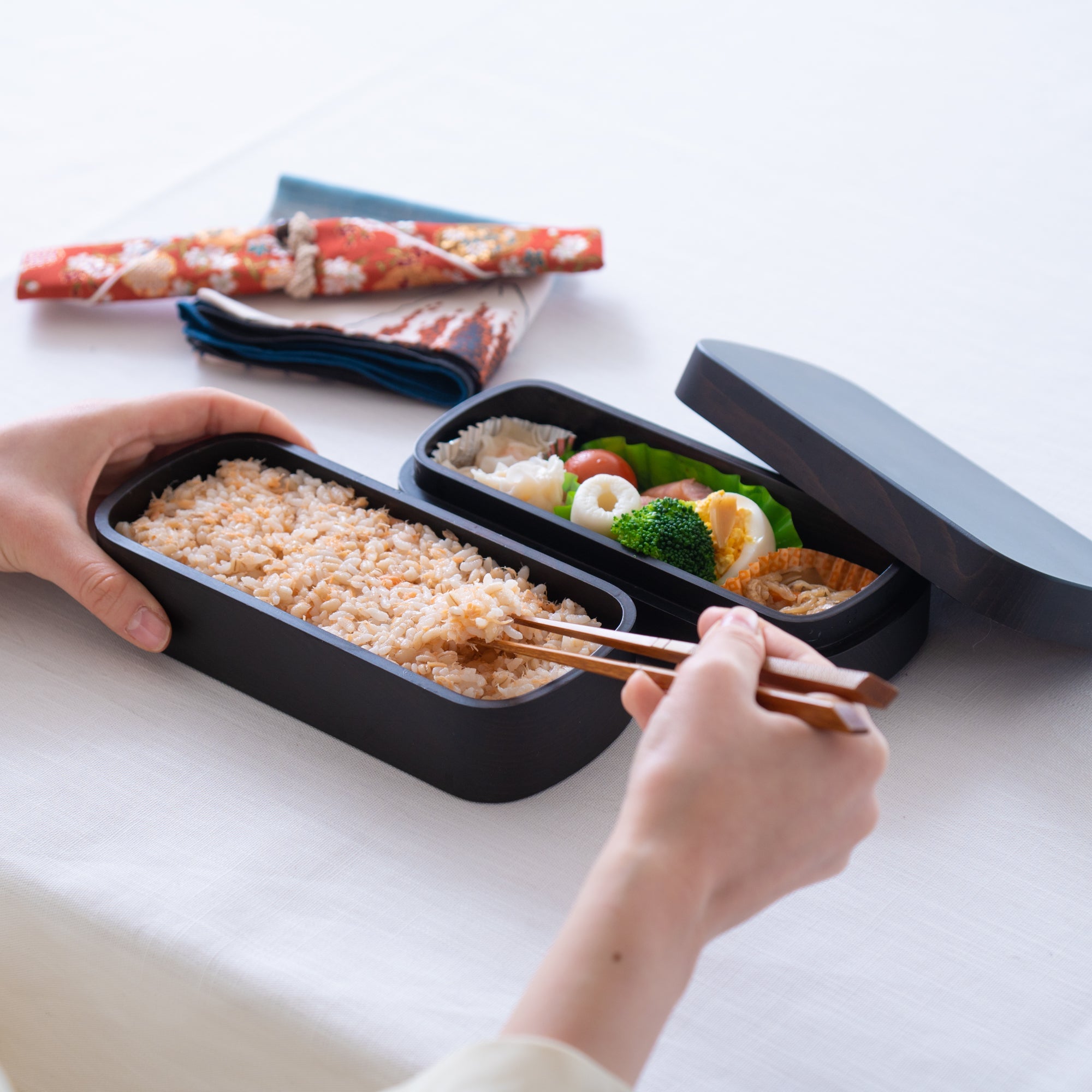
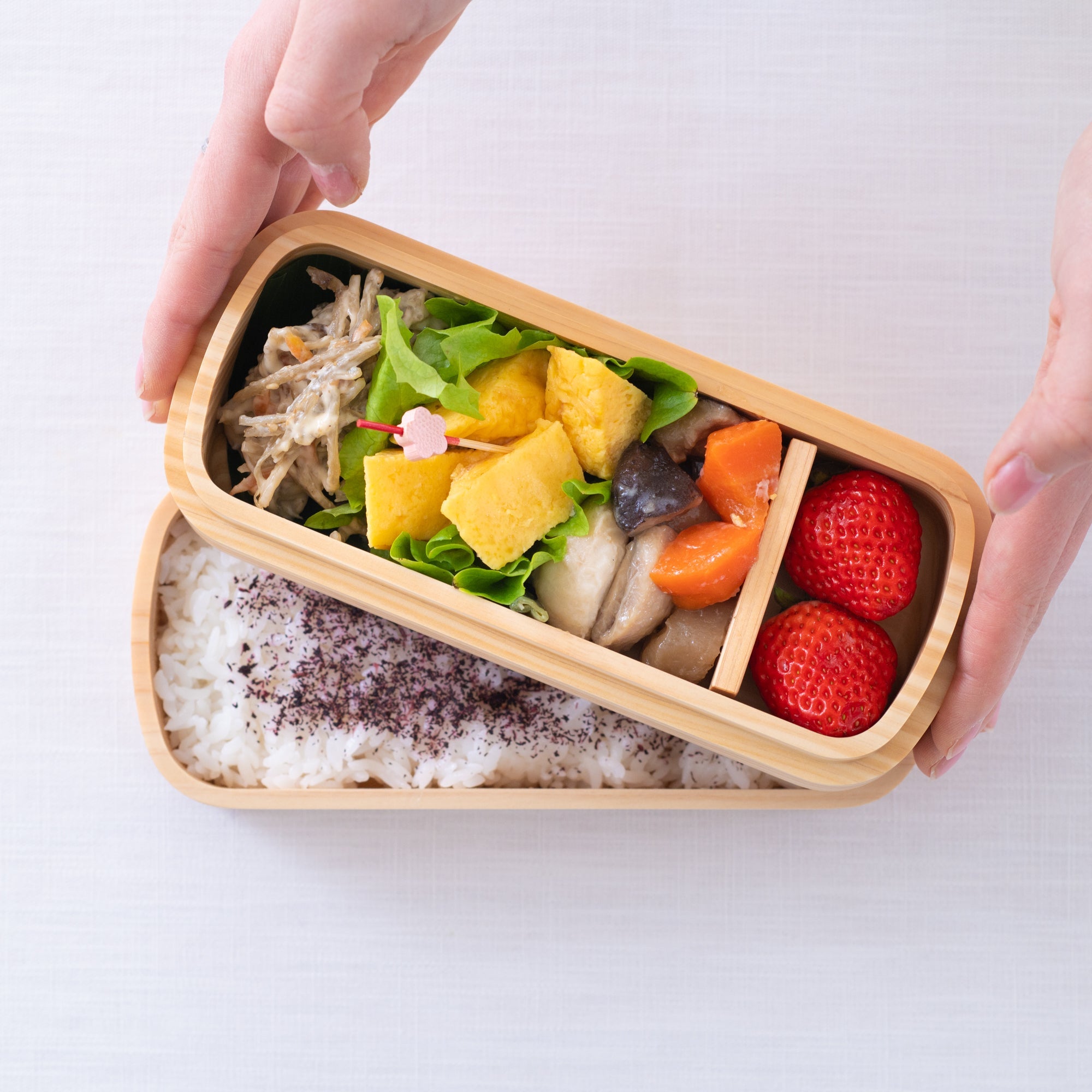
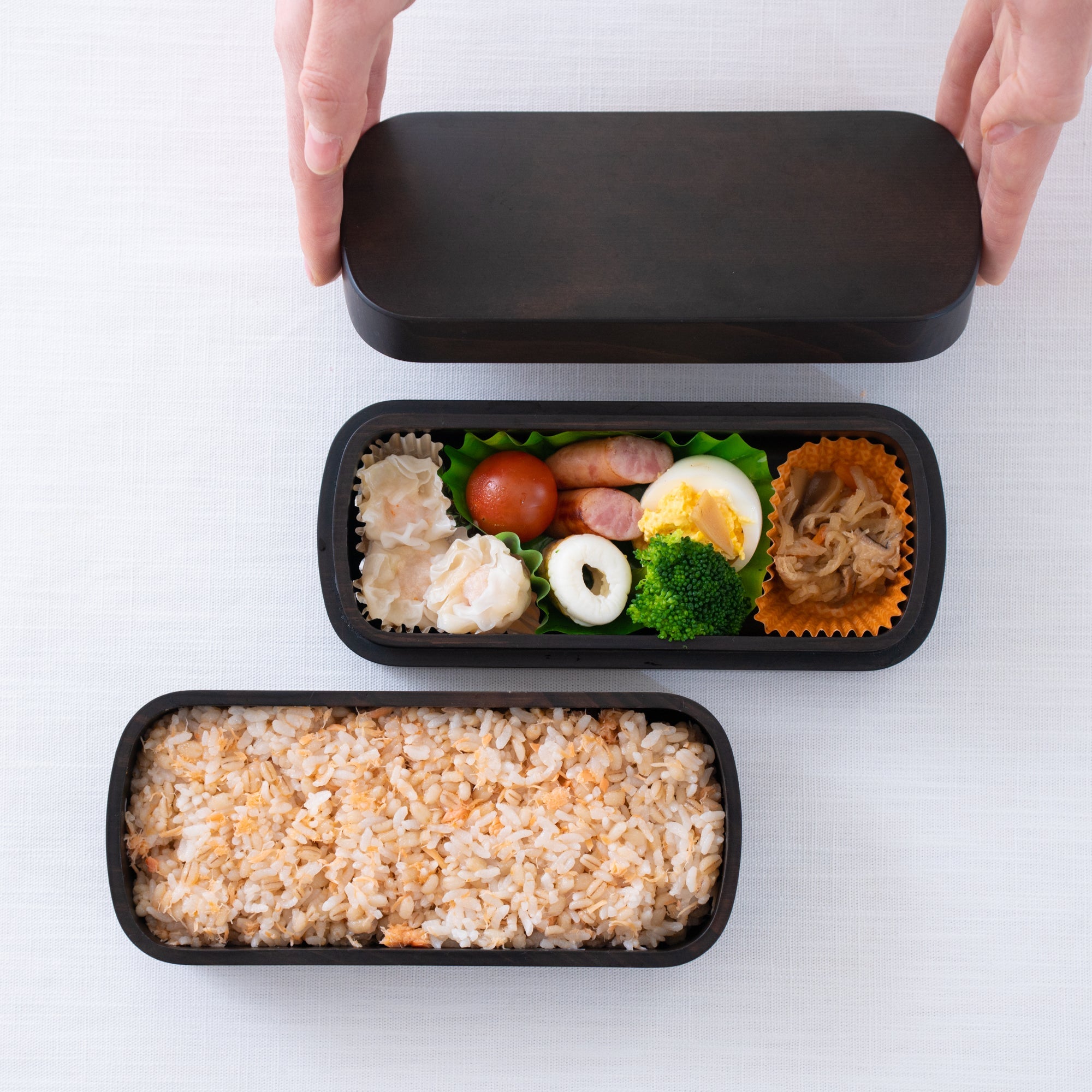
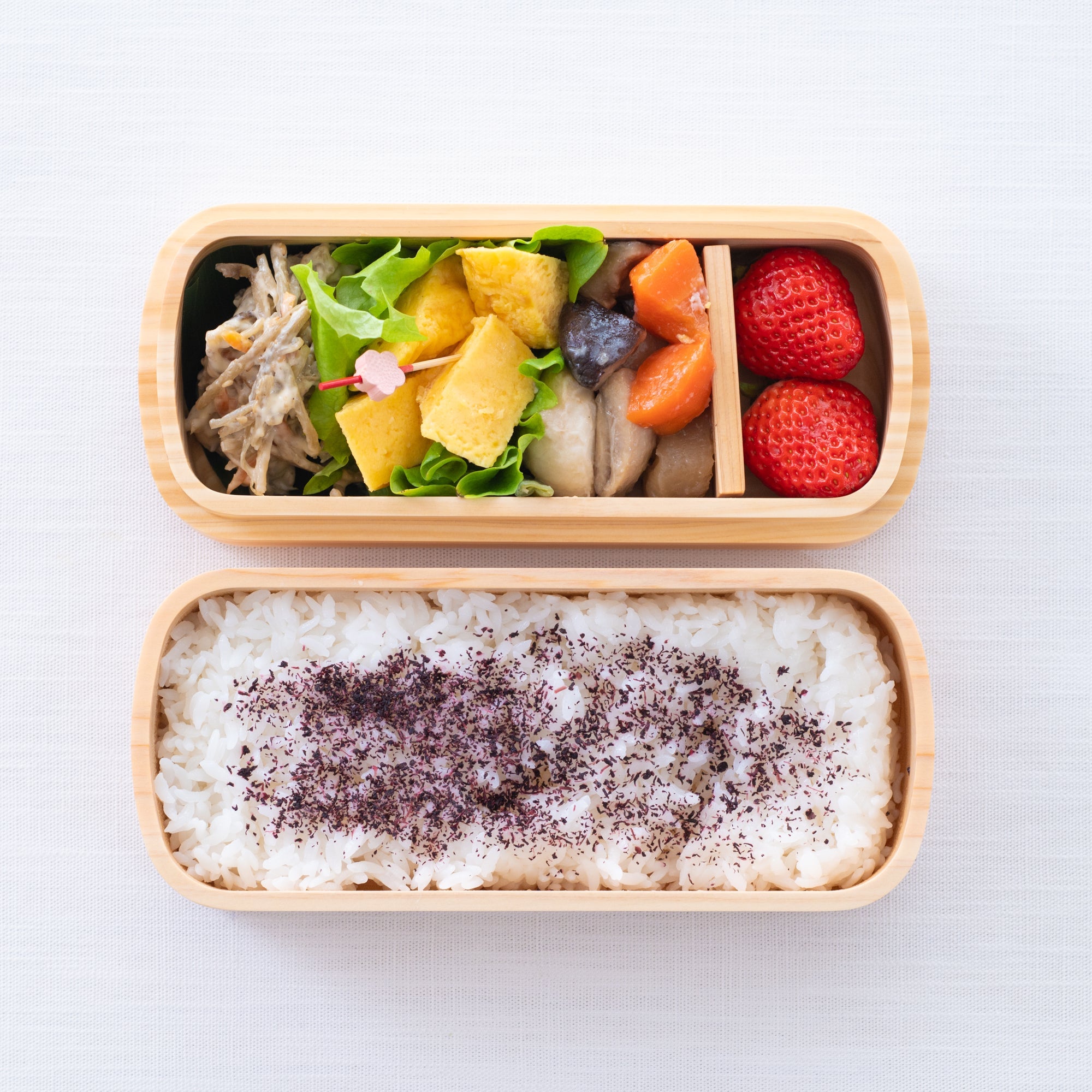
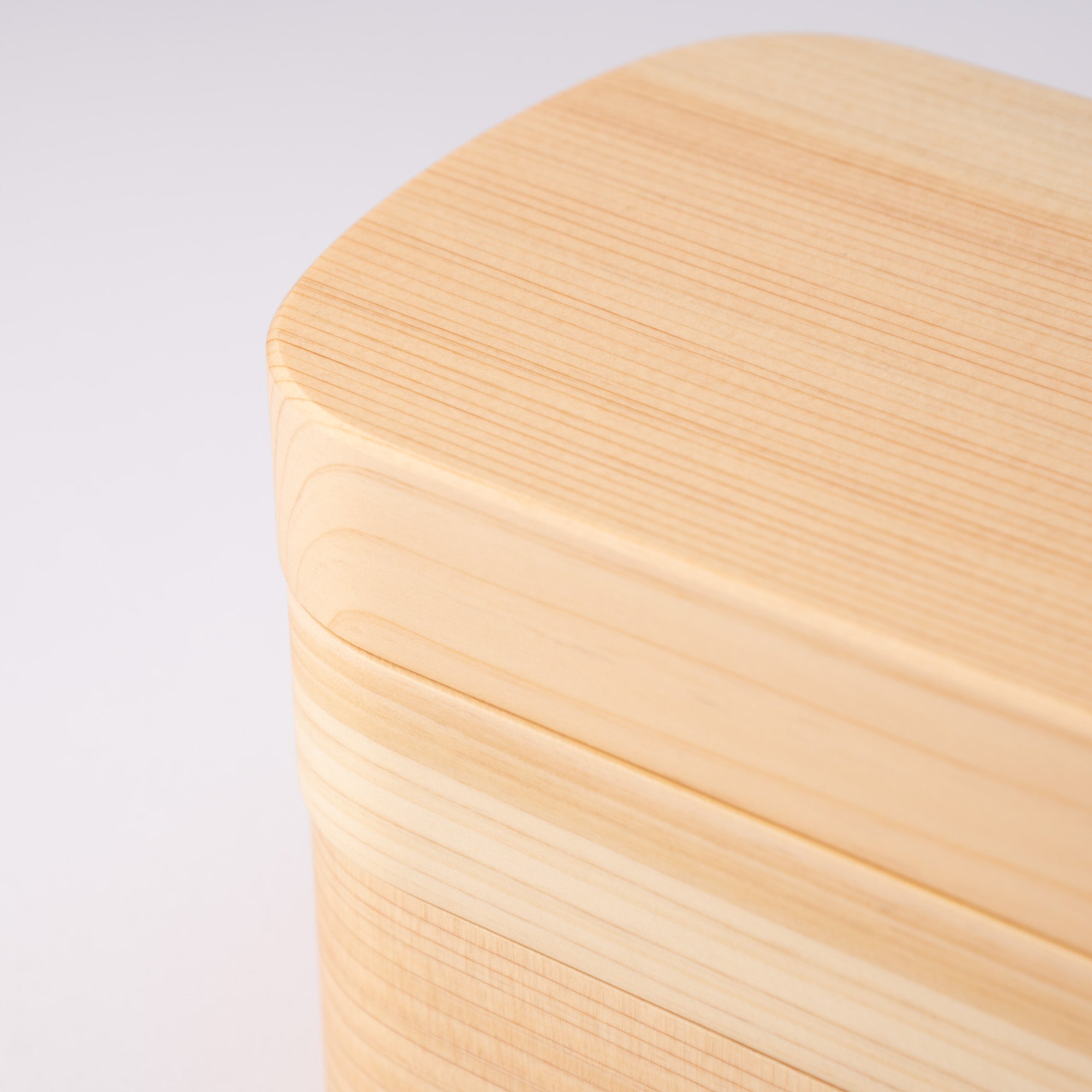
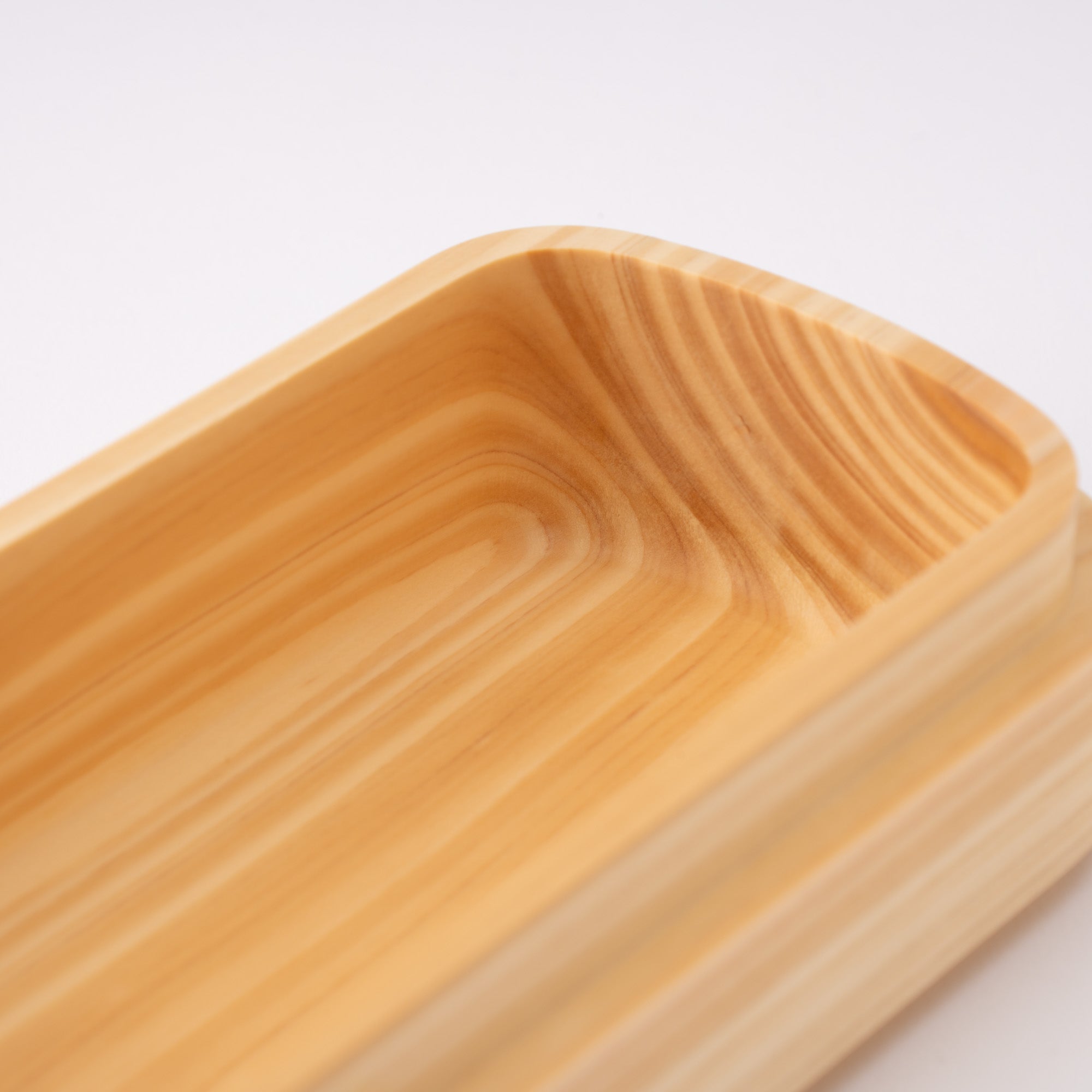
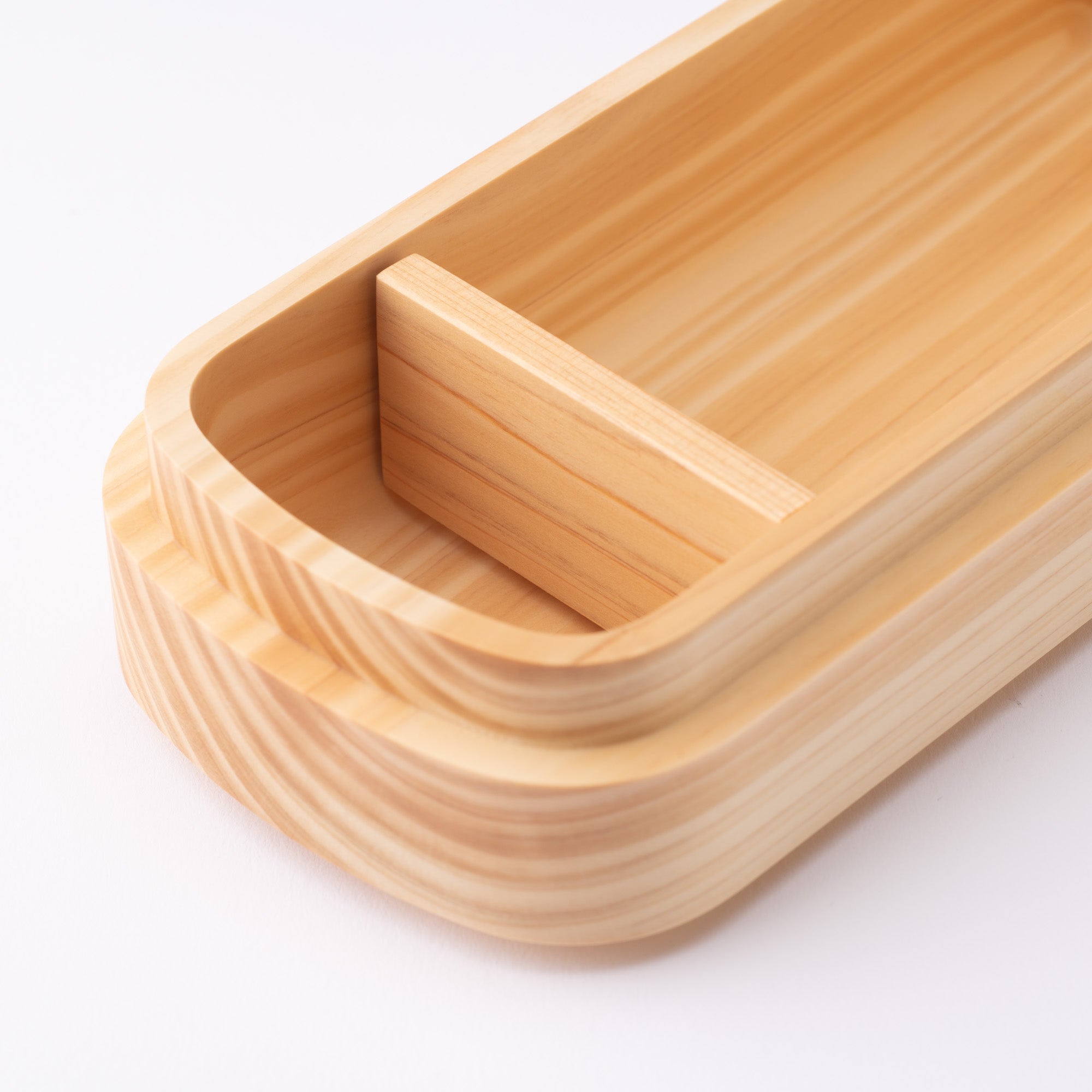
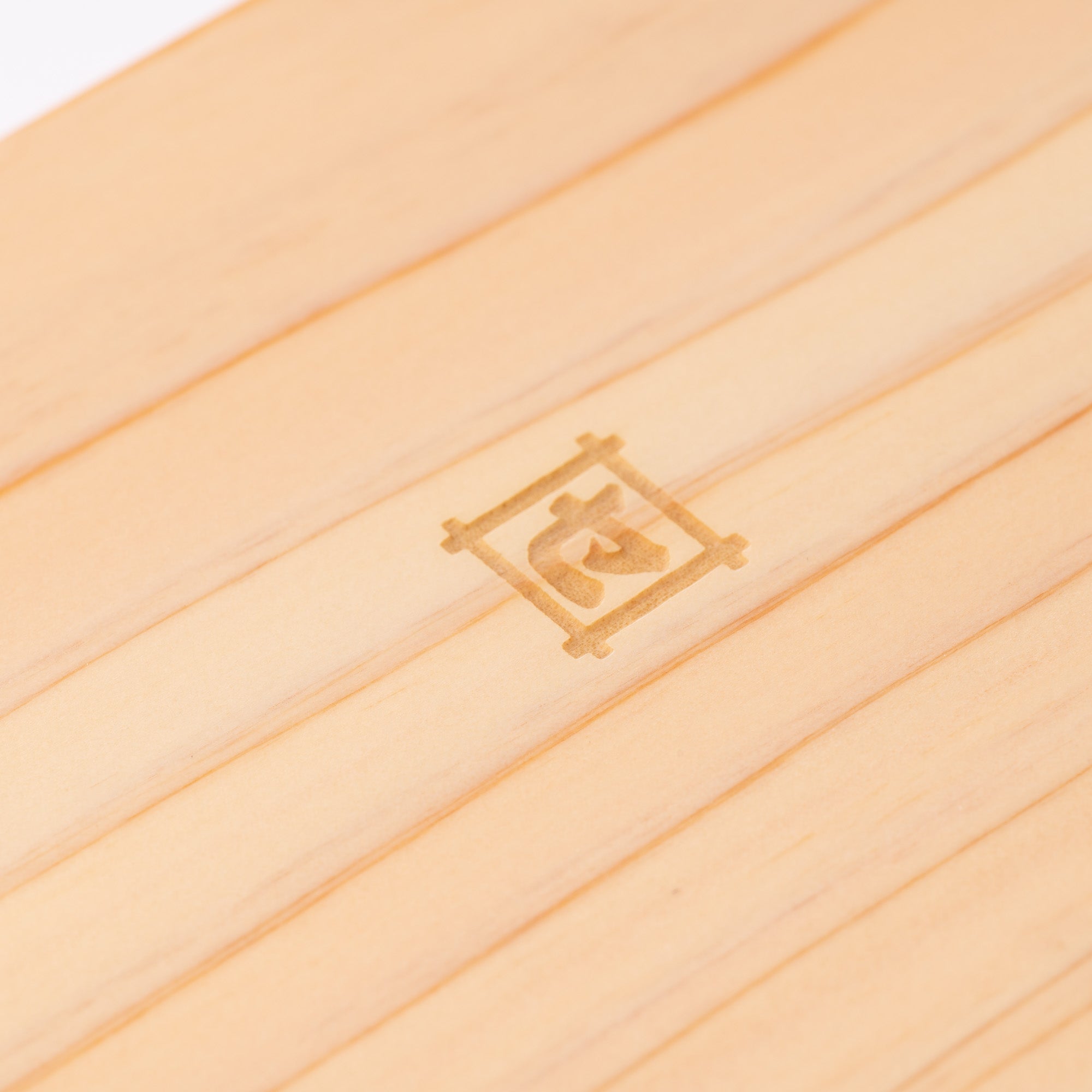
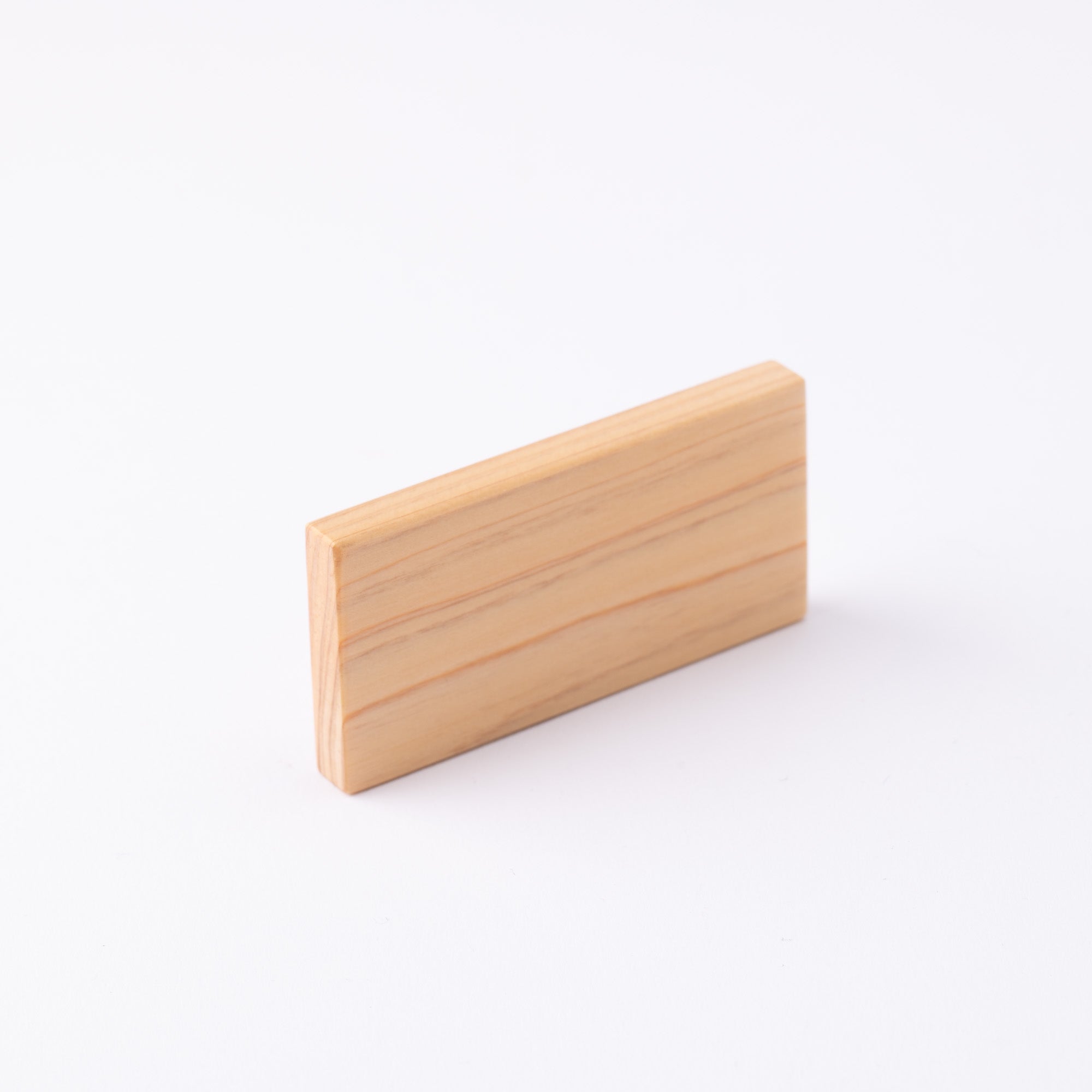
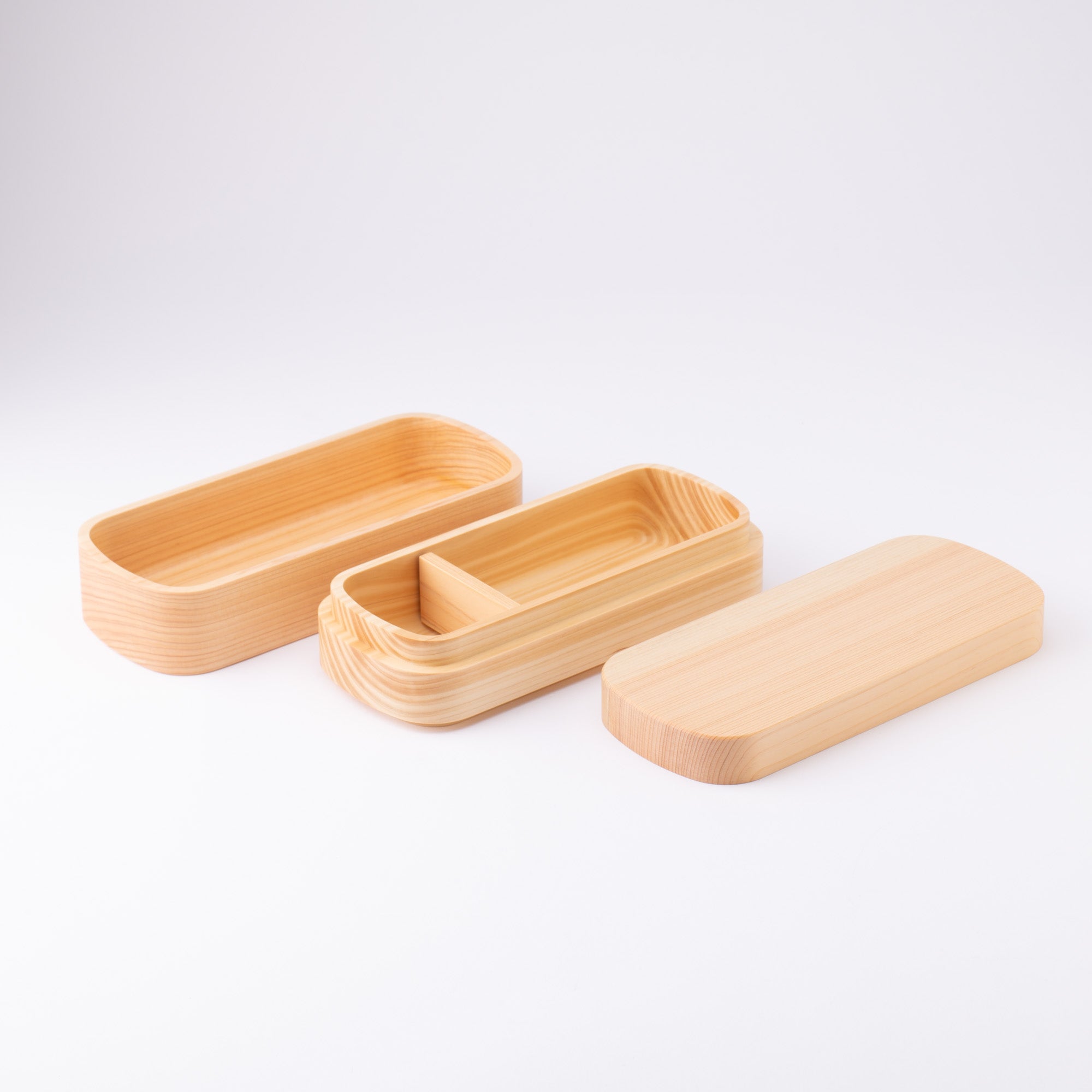
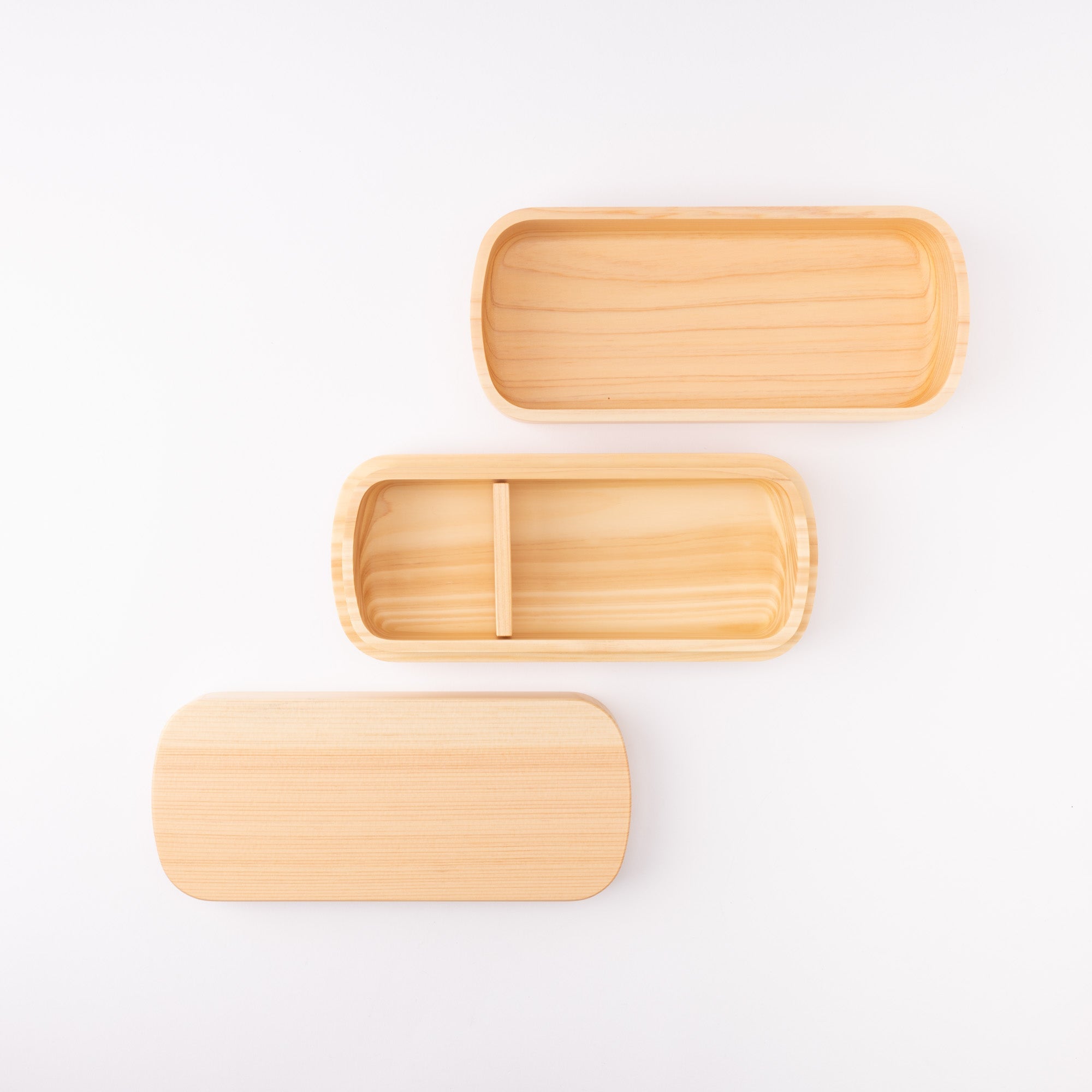
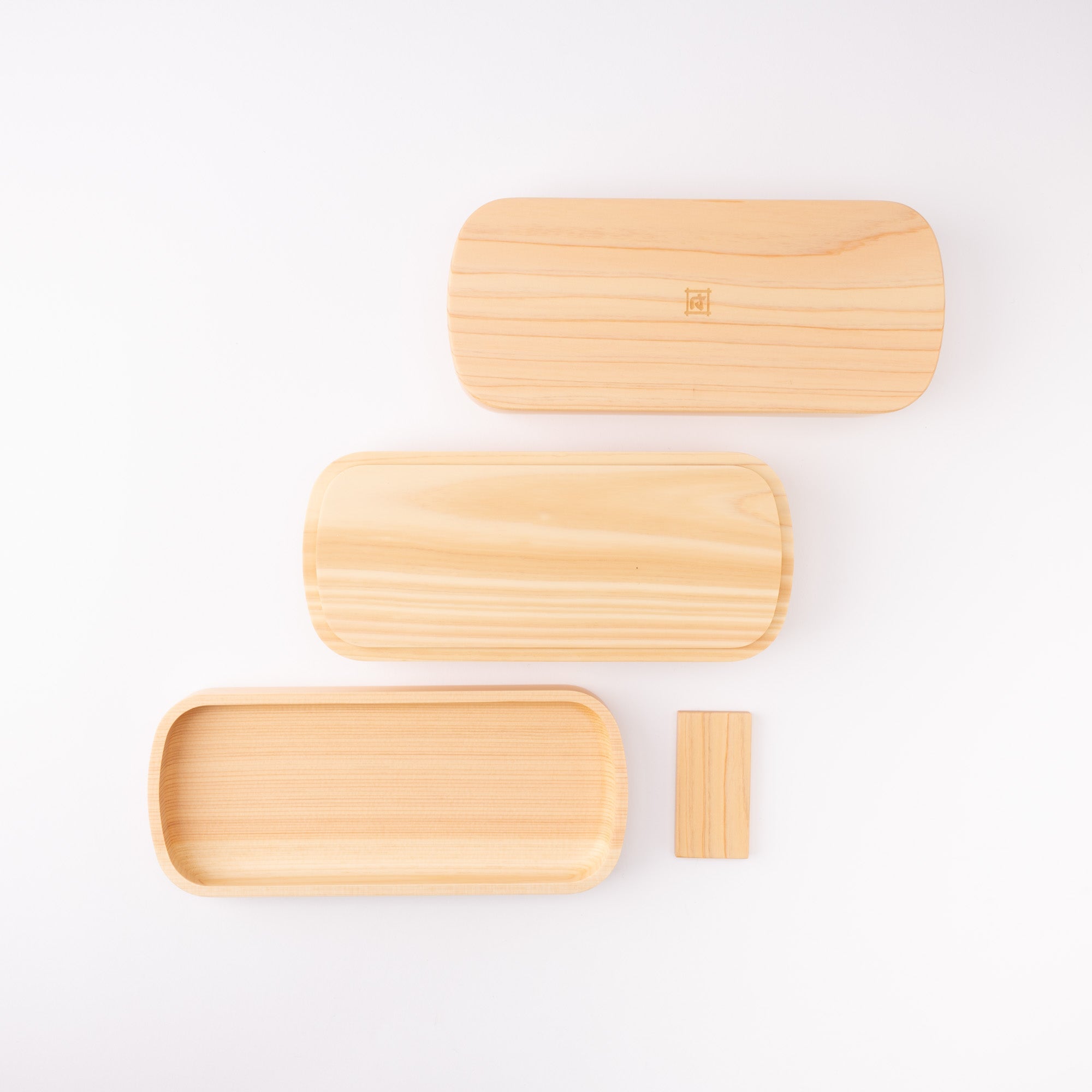
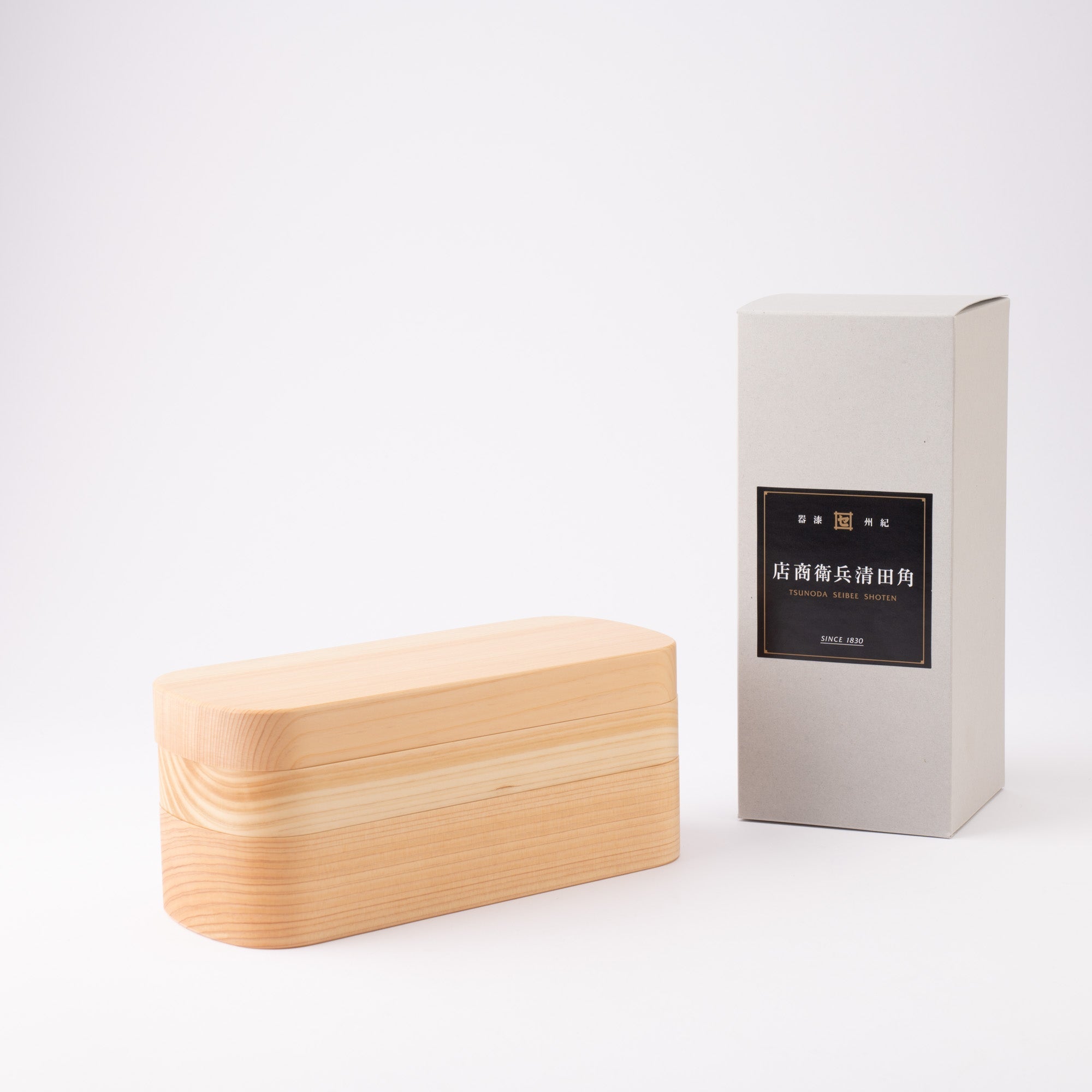
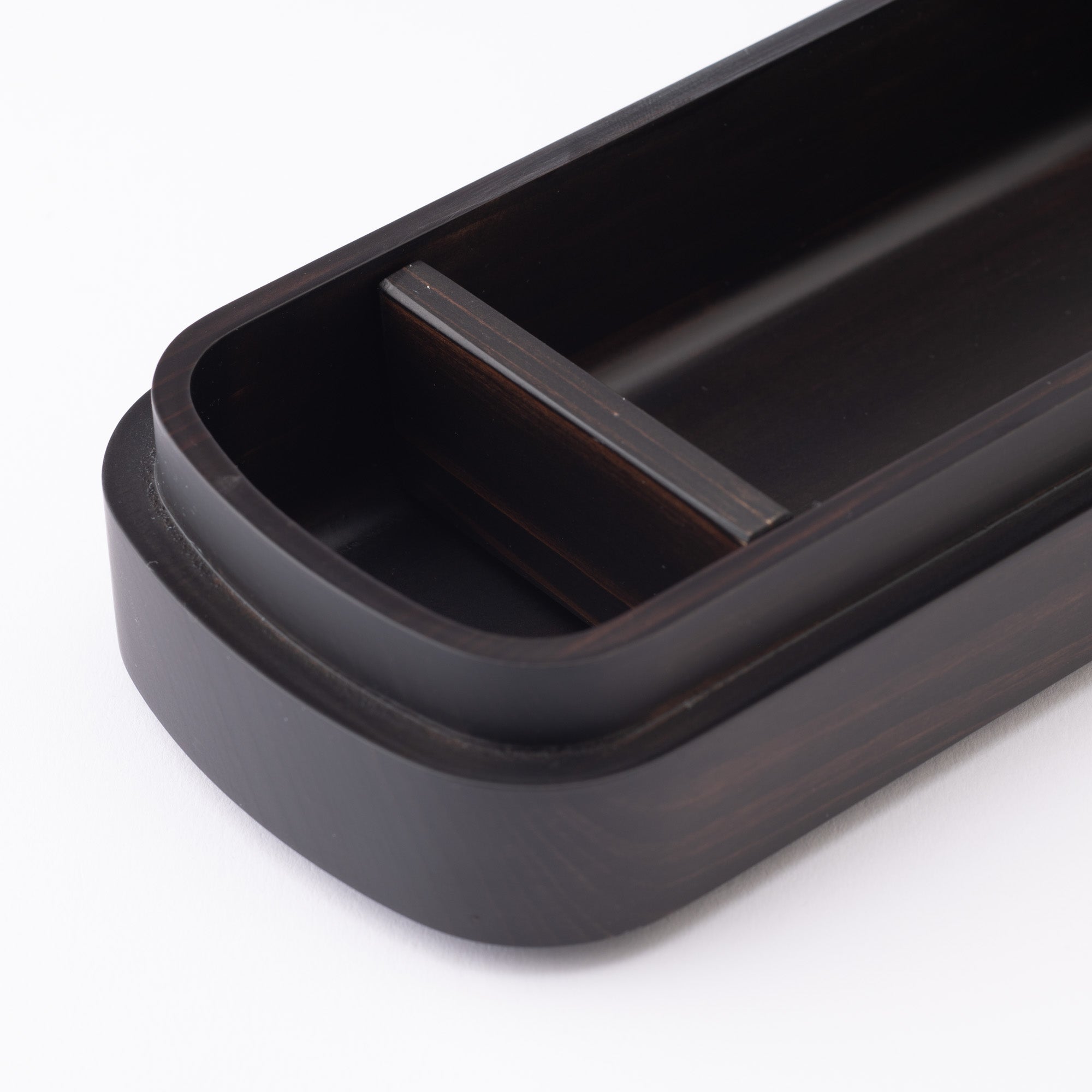
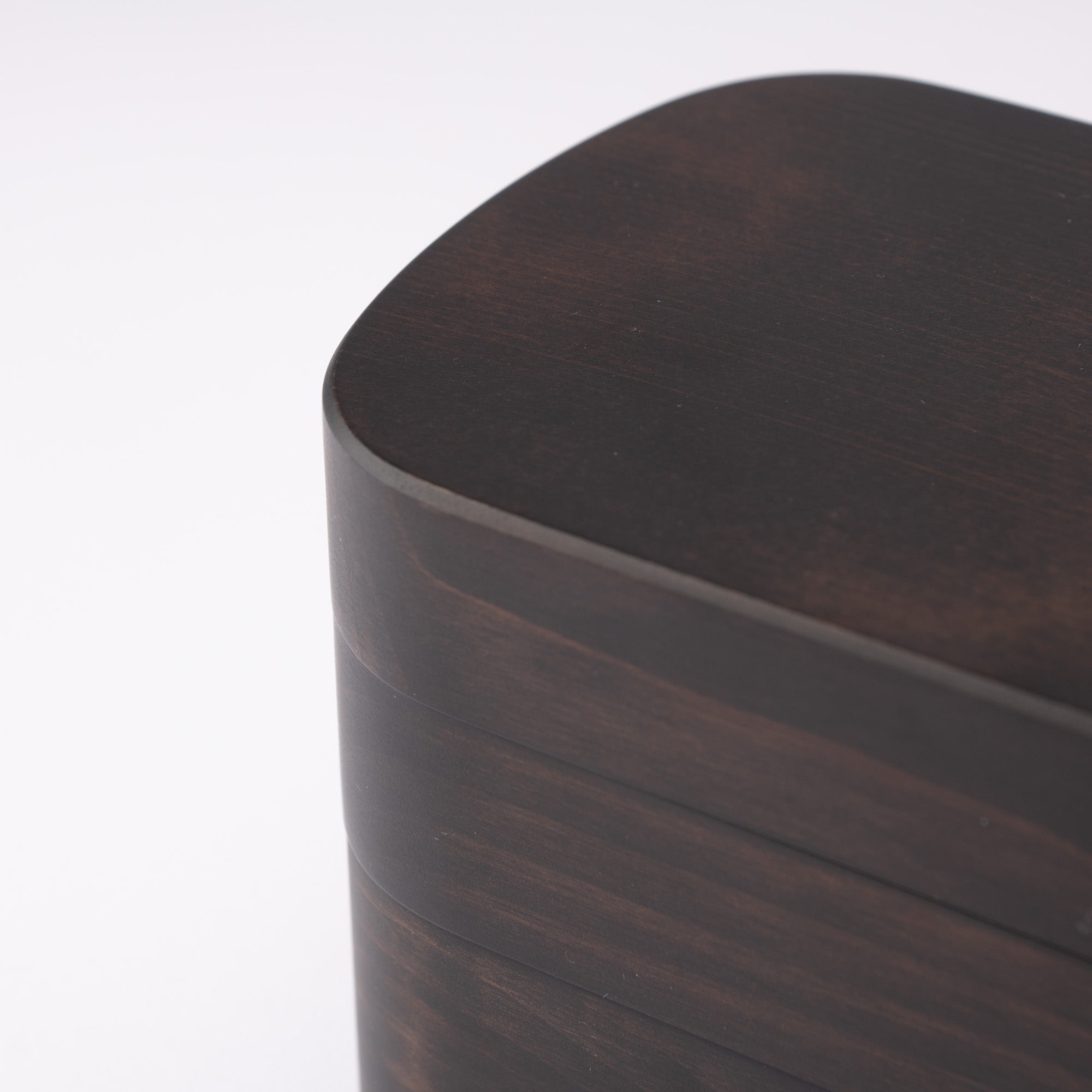
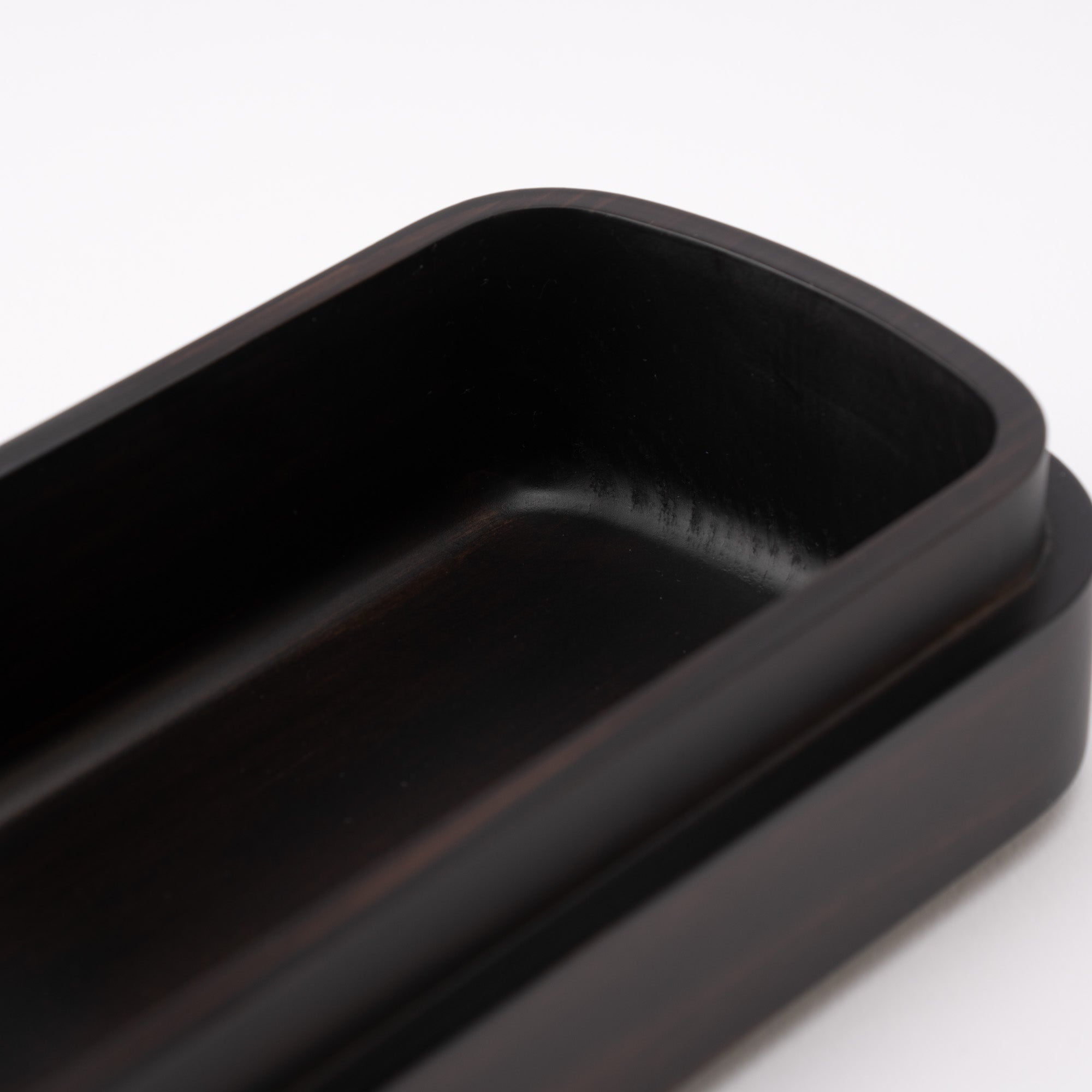
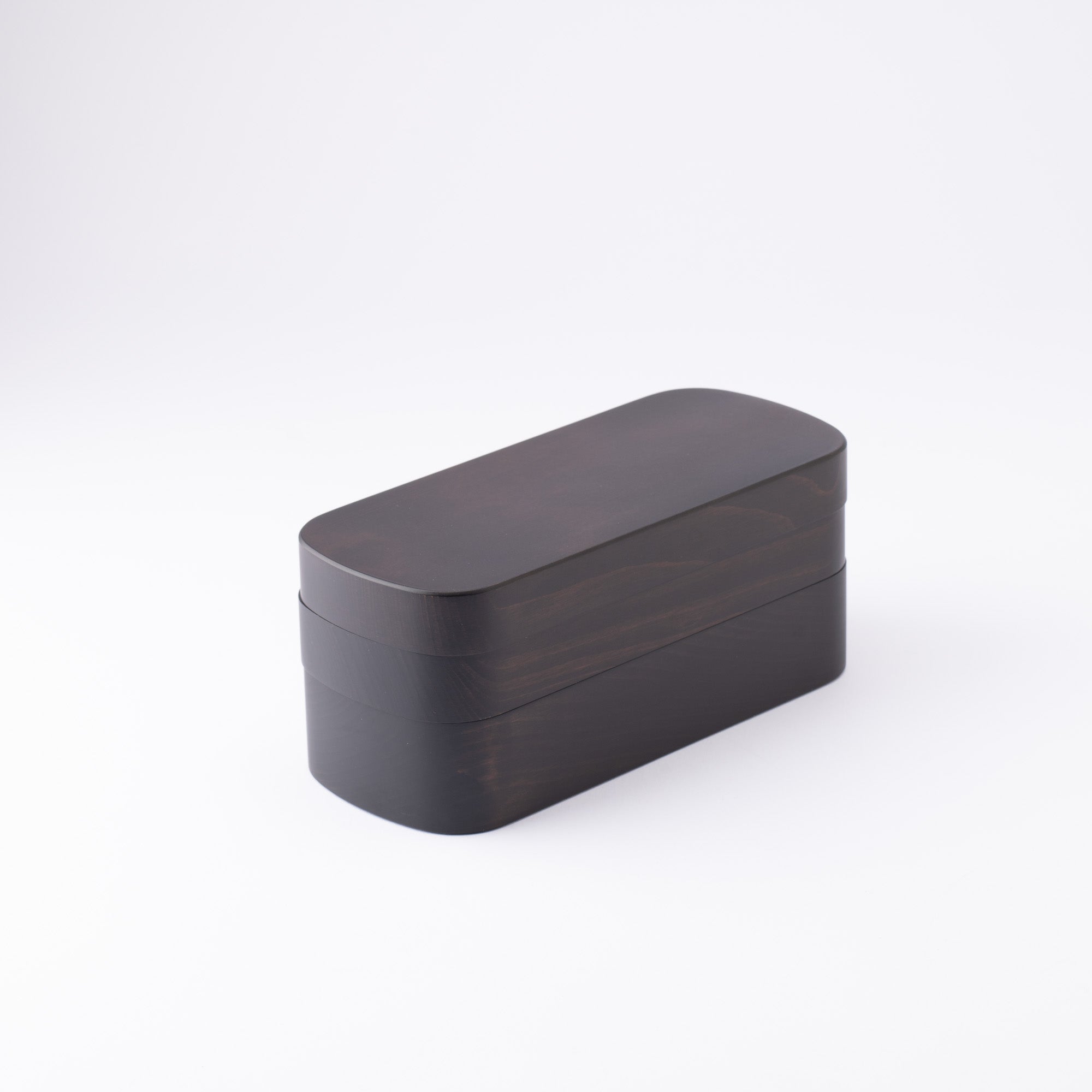
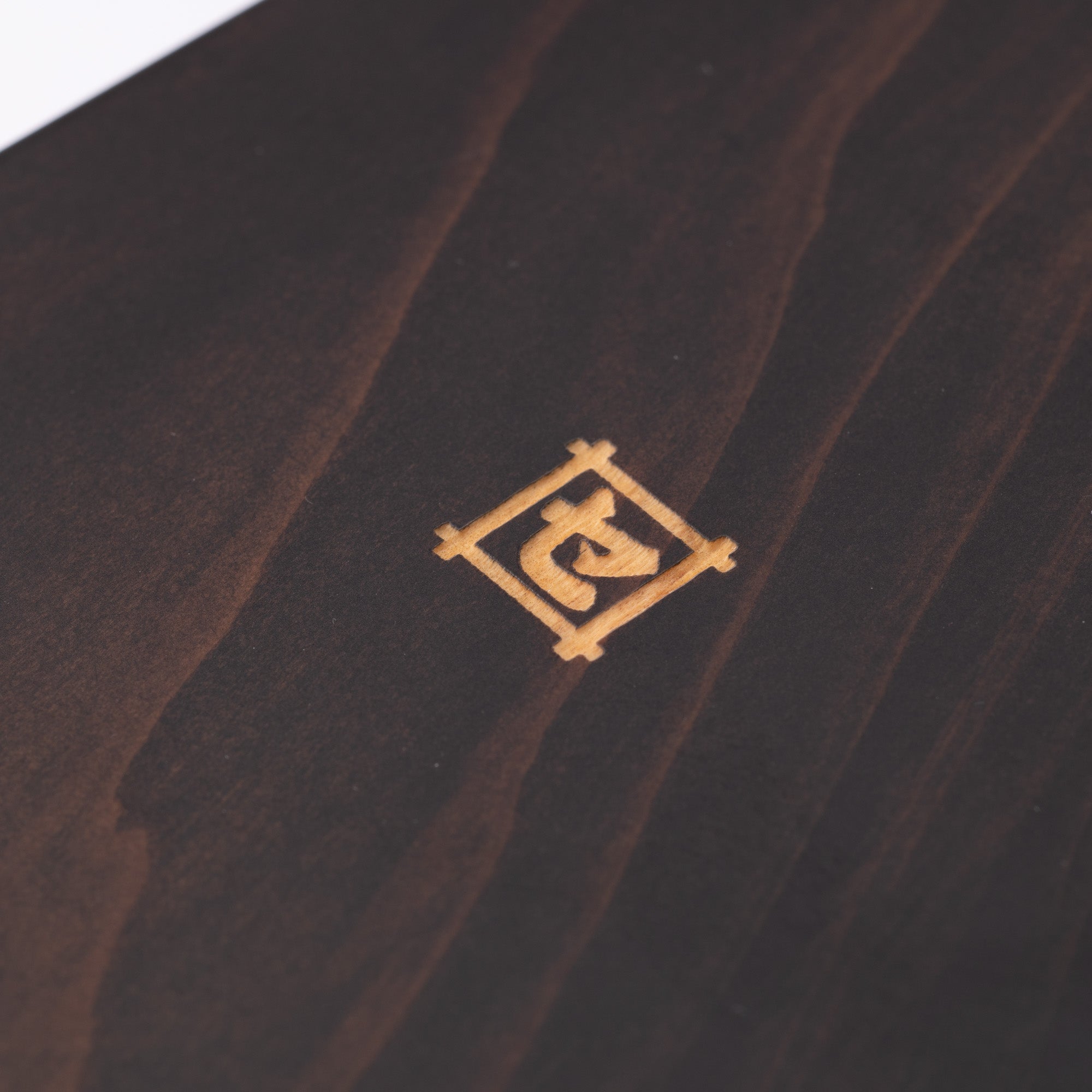
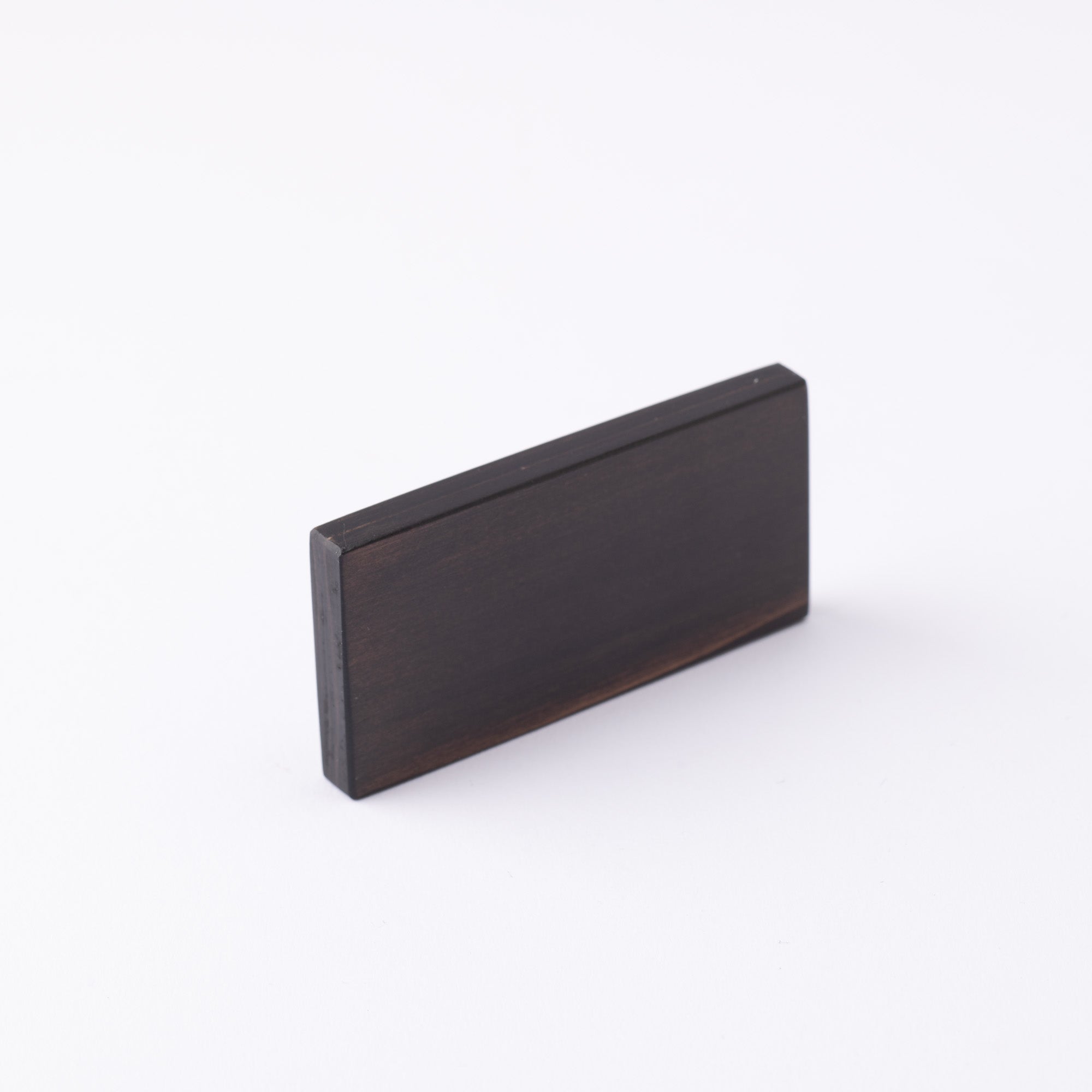
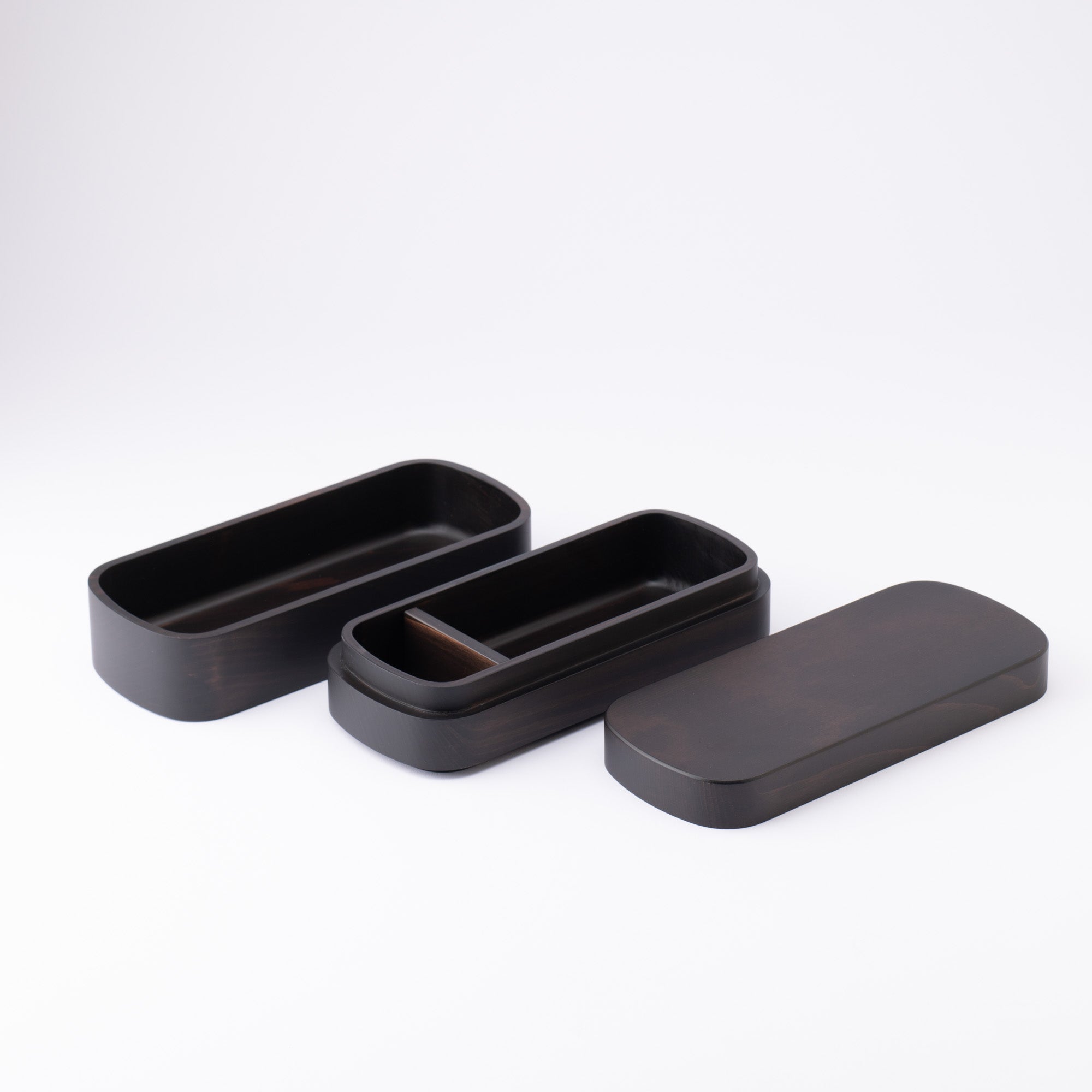
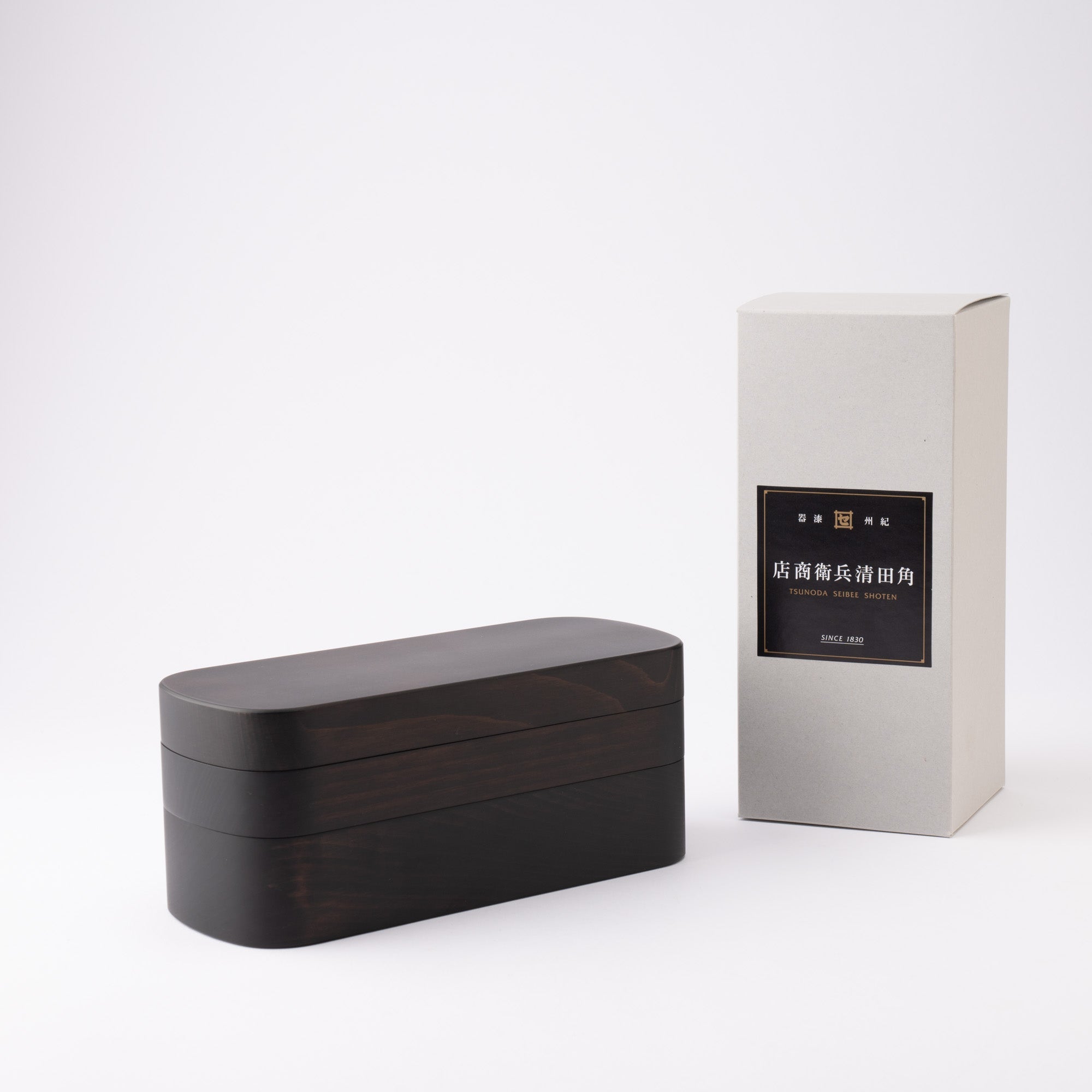
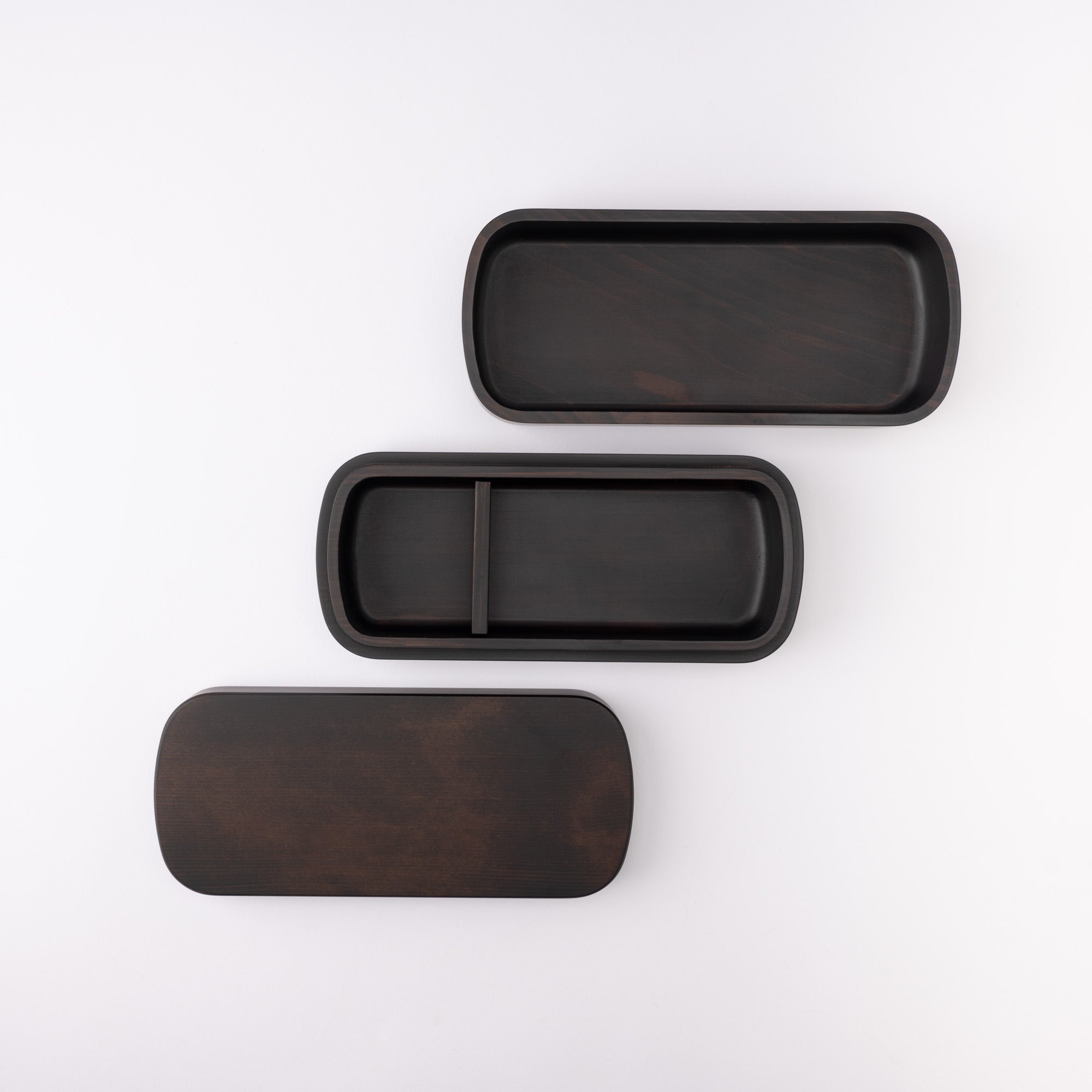
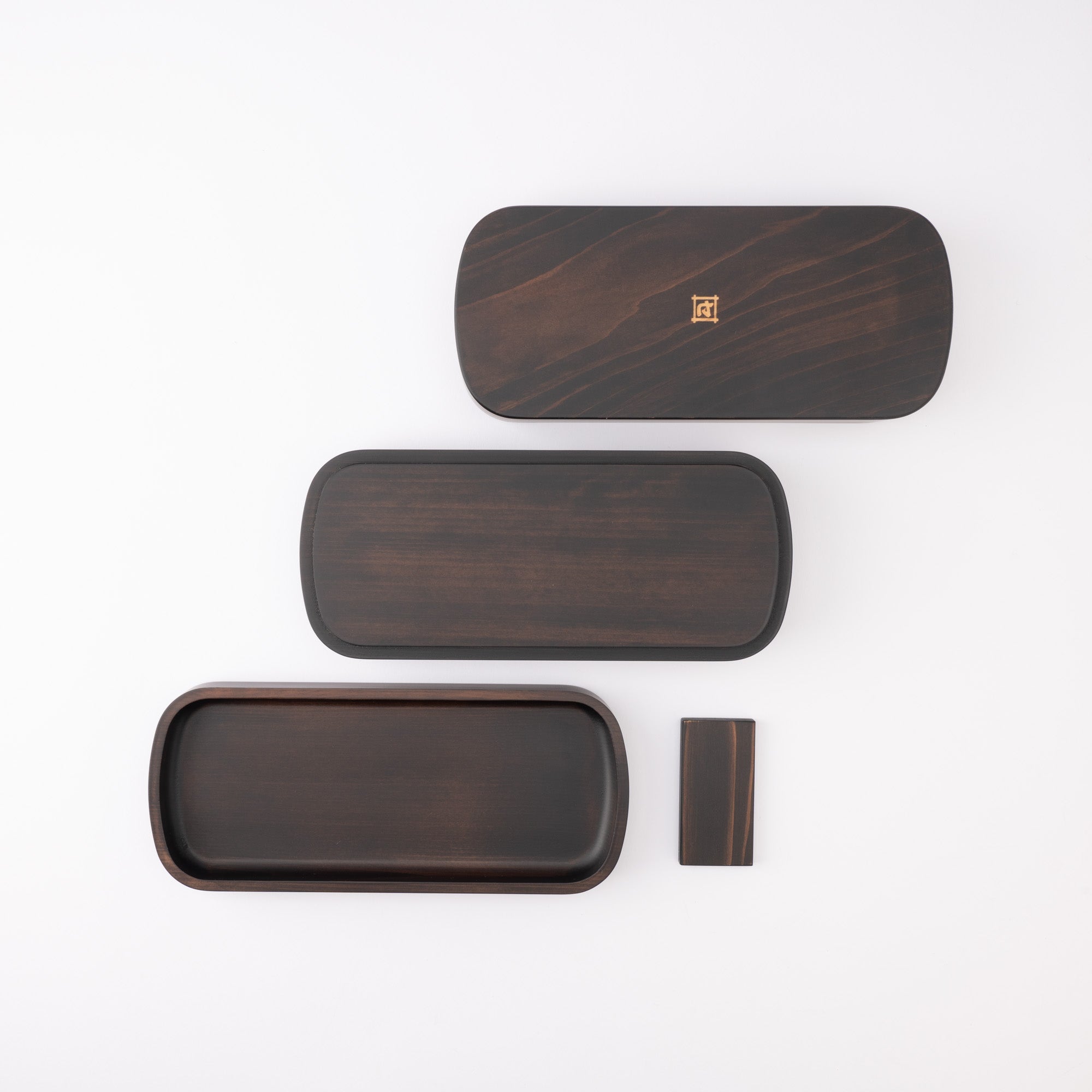
Rechteckige Bento-Box mit zwei Ebenen und natürlicher Holzmaserung
Estimated Shipping Widget will be displayed here!
Diese zweistöckige Bento-Box ist perfekt für den einmaligen Gebrauch oder Ausflüge mit der Familie! Sie können Reis und Beilagen ganz einfach auf verschiedene Ebenen verteilen oder kalte Gerichte auf einer Ebene und warme Gerichte auf der anderen platzieren. Es verfügt über einen einzelnen Teiler, mit dem Sie Ihr Essen schön anordnen können.
Diese Bento-Box absorbiert außerdem Feuchtigkeit aus der Umgebungsluft, wodurch verhindert wird, dass Lebensmittel über längere Zeit austrocknen oder altbacken werden. Viele sind sehr beeindruckt vom Geschmack der darin aufbewahrten Lebensmittel, selbst wenn diese kalt werden.
Sie besteht aus wunderschöner Kishu-Zypresse aus den Bergen der Präfektur Wakayama. Die Holzblöcke werden maschinell ausgehöhlt und von lokalen Handwerkern von Hand bearbeitet. Jede Bento-Box wird sorgfältig hergestellt, und täglich werden nur etwa zehn Stück produziert.
Die antibakteriellen und antimikrobiellen Eigenschaften der Kishu-Zypresse machen sie zudem hervorragend geeignet, um das Verderben von Lebensmitteln zu verhindern. Die Oberfläche der Bento-Box ist mit einer speziellen Nanobeschichtung versehen und somit spülmaschinenfest. Es ist wirklich ein Juwel, das ein Leben lang hält.
EINZELHEITEN
| Quantity | 1 |
| Size | L 19.5 cm (7.7 in) × W 8.5 cm (3.3 in) × H 8.5 cm (3.3 in) |
| Capacity |
[Top Tier] 400 ml (14 fl oz) [Bottom Tier] 500 ml (17 fl oz) |
| Material | Wood |
| Package Type | Paper box |
| Microwave | No |
| Dishwasher | Yes |
Hersteller / Marke
Die lange Geschichte von Tsunoda Seibee Shoten in der Präfektur Wakayama begann 1830 gegen Ende der Edo-Zeit (1603–1867) als Fachgeschäft für Lackwaren aus Kishu. Der Name des Geschäfts stammt aus der Kanei-Zeit um 1620, als der Kaufmann Tsunoda Seibee zu Fuß von Kishu (heutige Präfekturen Wakayama und Mie) nach Edo (heutiges Tokio) reiste, um in Kishu hergestellte Lackwaren zu verkaufen.
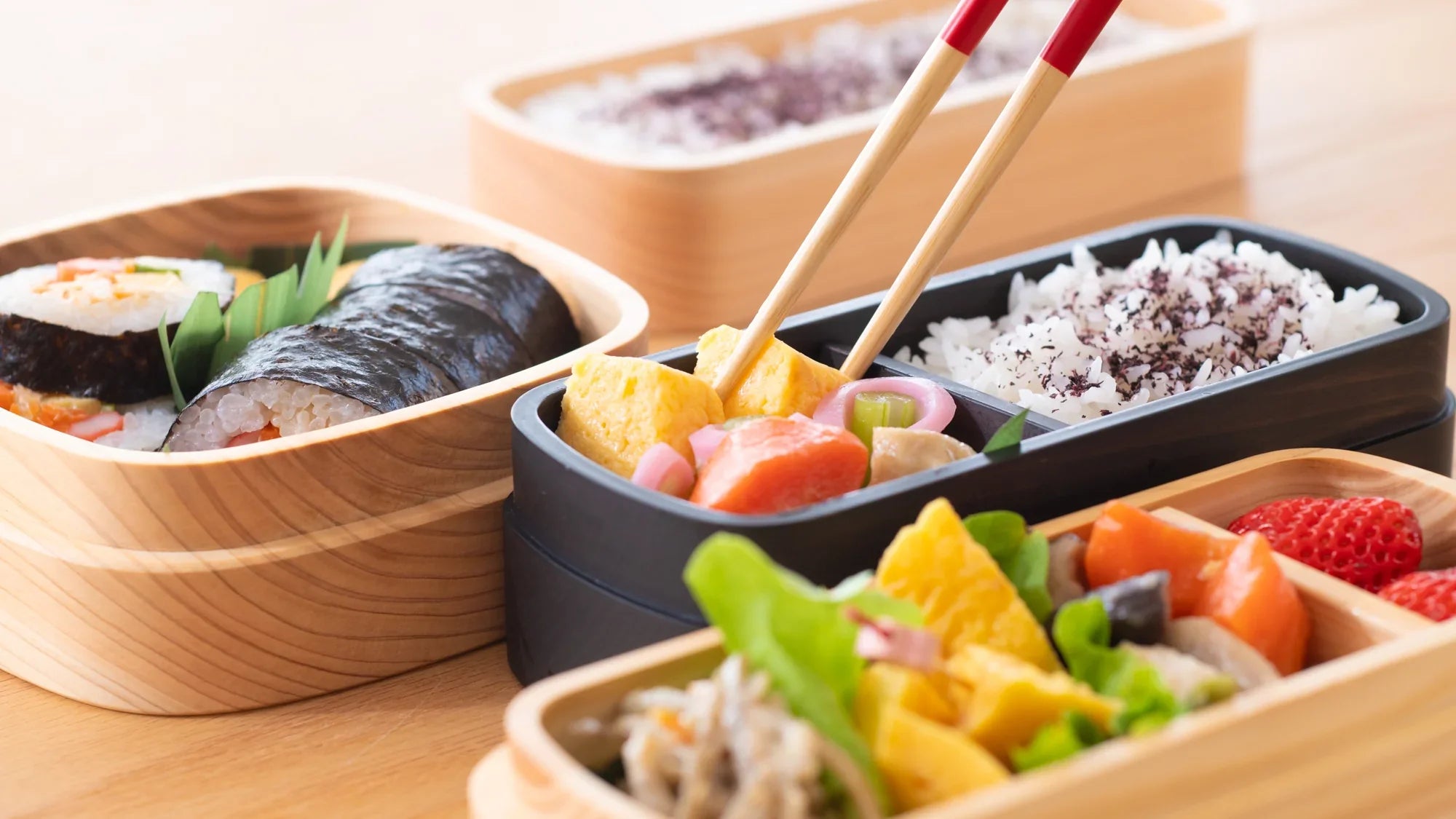
Kunsthandwerk
Kishu-Lackwaren gehören zum traditionellen Kunsthandwerk der Präfektur Wakayama und werden hauptsächlich im Stadtteil Kuroe der Stadt Kainan hergestellt. Der Ursprung der Kishu-Lackwaren geht auf die Muromachi-Sengoku-Zeit (1336–1568) zurück, als Drechsler begannen, Holzschalen aus dem Holz der lokalen Kishu-Zypresse herzustellen.
Heute gilt Kishu-Lackwaren als einer der bedeutendsten Lackwarenstile Japans und wurde 1978 vom Ministerium für Handel und Industrie (dem heutigen Ministerium für Wirtschaft, Handel und Industrie) als traditionelles Handwerk anerkannt.
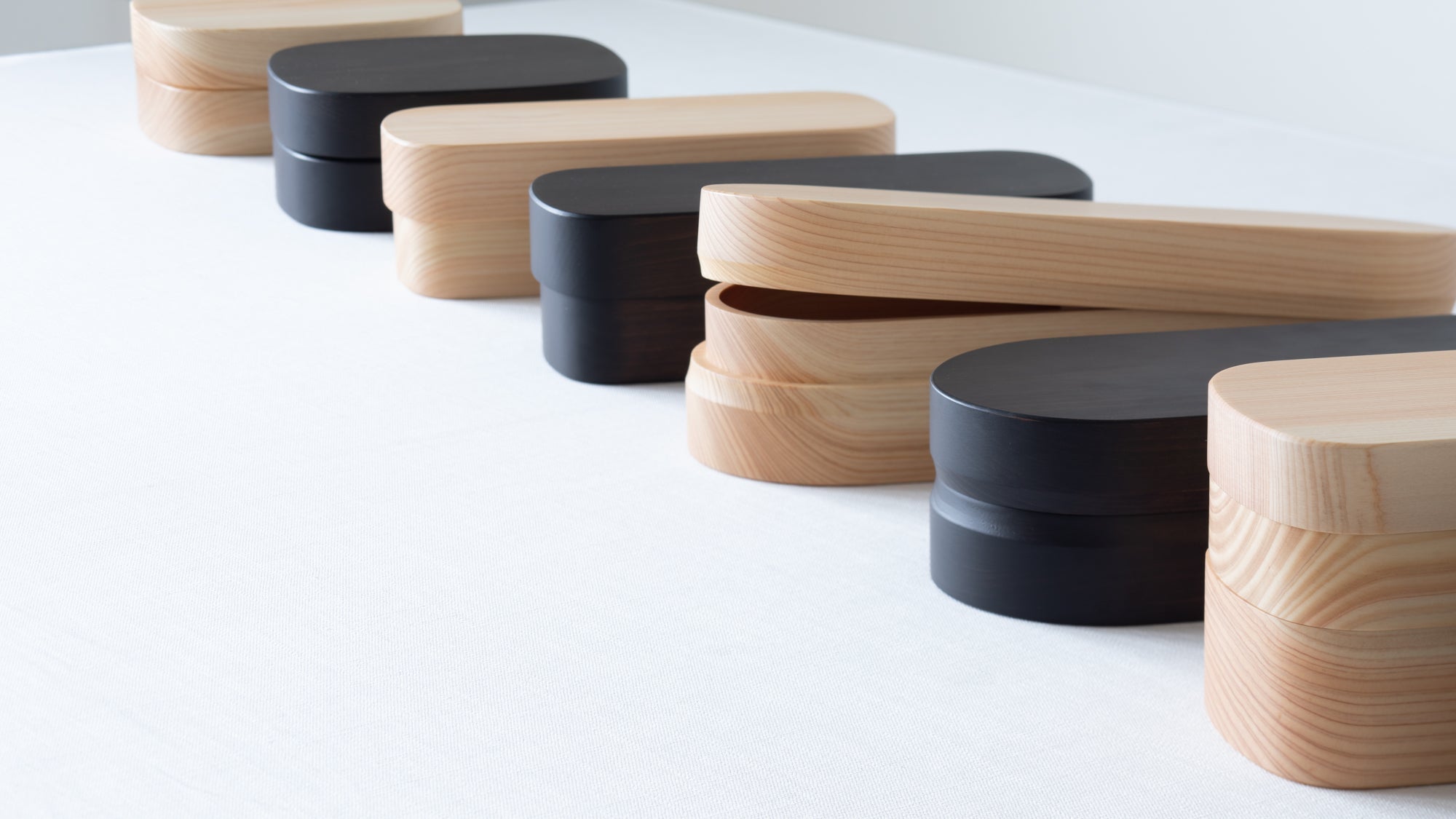
Anmerkungen
Optionen auswählen

























Estimated Shipping Widget will be displayed here!
Bento-Boxen
Eine schöne Bento-Box ist ideal für Feiern und fröhliche Zusammenkünfte mit Familie und Freunden. Sie ist leicht zu tragen und wertet die Tischdekoration mit ihrem eleganten, authentischen Stil auf. Einfach auf den Tisch gestellt, wertet eine Bento-Box die Präsentation auf und verleiht jedem Essen einen festlichen Charme.


